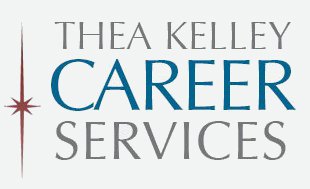 You’ve got a LinkedIn profile. Now what? What do you do on LinkedIn after creating a profile? How can you use its full potential to get a great job sooner and advance your career?
You’ve got a LinkedIn profile. Now what? What do you do on LinkedIn after creating a profile? How can you use its full potential to get a great job sooner and advance your career?
“I’ve been using LinkedIn and I’m not getting anywhere.”
I recently received an email from a professional association I belong to, asking whether I hear job seekers say this. Yes, I hear it all the time!
This Career Thought Leaders email did a great job of listing the elements of a winning LinkedIn strategy: what you need to do after you create an engaging, keyword-optimized profile that grabs the attention of recruiters. I’d like to share that list with you, along with my tips for creating your own LinkedIn strategy.
What do you do on LinkedIn?
✓ Develop a clear understanding of what you want to be known for, who needs to know you, and what conversations you want to have with this audience.
Right! Beyond laying out your experience and skills, what are your key selling points as a job seeker? What is your brand? Without this focus, it’s hard to stand out from everyone else who does what you do. How do you do it better? What’s special about you? Once you identify this, you can make those points unmistakably clear throughout your profile, from your Professional Headline (the line right below your photo) to your Interests and everything in between.
As for “who needs to know you” and the conversations you want to have with them–read on.
✓ Build a list of target companies, which you then use to set job alerts and guide your search for people and content to engage with.
Like any form of marketing, career marketing works best when it’s targeted to a certain audience. What companies might be most suitable and likely to employ you? Using LinkedIn, develop a target list of about 40-50 companies. Then follow those companies and key people within them, comment on those people’s posts, reach out to likely individuals to suggest career research conversations, use search features to find out who recruits for those companies and reach out to them, and generally build familiarity between yourself and your target companies. It’s a two-way street: becoming knowledgeable, and becoming known.
✓ Have an application strategy to optimize results and minimize time spent applying to open roles.
Don’t waste time poring through long lists of job postings. Instead, set up job alerts by going to Jobs>Job Alerts>Search for jobs and then clicking the All filters button (at the right) to set criteria like experience level, company, job functions and more.
Explore LinkedIn’s “Jobs” features, but think critically about them. For example, I suggest you avoid the green “Open to Work” frame you’ll see around some members’ profile photos. Its main effect is to emphasize to everyone that you’re currently or soon-to-be unemployed–is that a selling point? Recruiters don’t need to see that you’re looking; if they find your profile and think you’re a good fit for an open role, they’ll reach out whether you have this frame or not.
The feature “Easy Apply” can buy ease at the expense of effectiveness. Make sure you’re applying with an excellent resume (not necessarily your profile, which you can’t target the way you can a resume), a strong cover letter (which “Easy Apply” doesn’t include) and, whenever possible, a personal referral. The following strategies can help build your referral network.
✓ Build a warm outreach strategy to improve the help you get from those who already know, like, and trust you.
Many job seekers start their search by sending a mass message to their friends and acquaintances basically saying “I’m looking for a job, please let me know if you hear of any openings.” The “help” they usually receive consists of encouraging words and a promise that “I’ll keep you in mind”—and that’s about it.
Here’s a more effective outreach strategy. And when people ask “How’s your job search going,” here’s a truly useful answer.
✓ Have a community-building strategy to build new relationships and become more widely known, liked and trusted in your target industry.
This involves seeking career research conversations with company insiders, and perhaps boosting your visibility through consulting, skilled volunteering or pro bono work, participating in professional association, or sharing your expertise via LinkedIn posts, videos and/or blogging.
✓ Have a plan to consistently execute the strategy elements you choose.
The key word is “consistently.” How will you remind and motivate yourself? First, make sure you’re not expecting a flood of instant results. Take an attitude of experimentation, expect a learning curve, and stick with it. If your understanding and comfort level aren’t progressing after a few weeks of steady effort, if you’re still not seeing any early hints of how the process is going to work for you, it may be time to adjust your strategies and/or seek expert guidance. LinkedIn is a powerful career tool, but you need to learn and implement the best practices.
What do you do on LinkedIn after creating a profile? You build relationships, and eventually one or more of those relationships leads to an interview and a great new opportunity.

